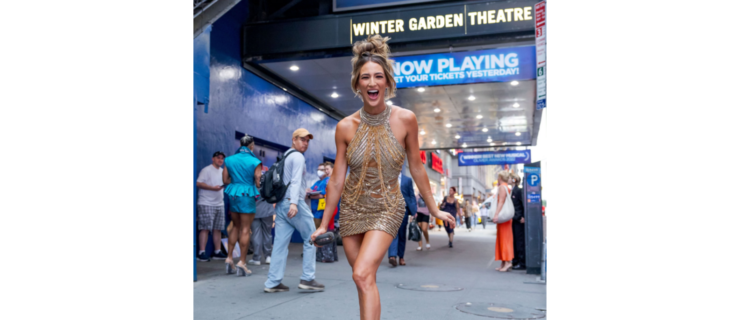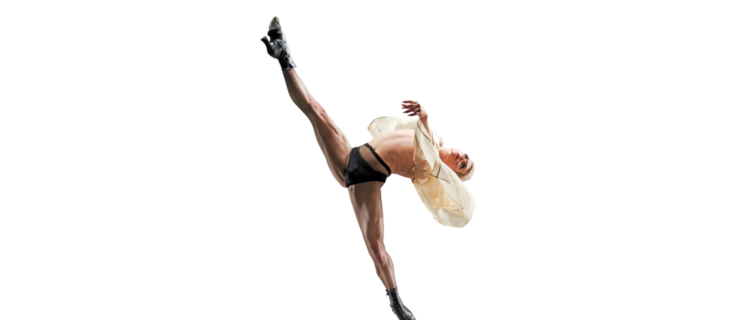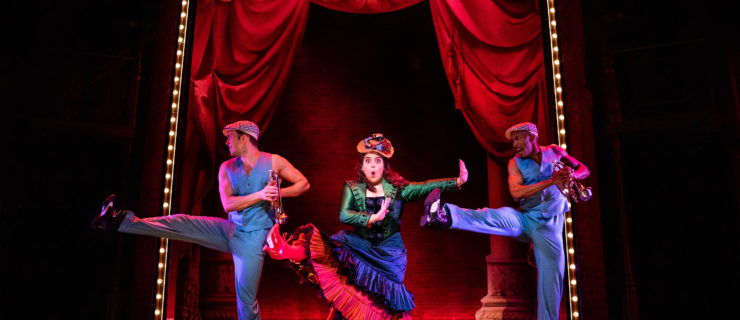Q&A with Broadway Star John Selya
In the course of John Selya’s career, he’s gone from member of American Ballet Theatre to Tony-nominated Broadway star of Twyla Tharp’s Movin’ Out to…baseball player?! Well, at least that was the case in Damn Yankees, presented by New York City Center’s Encores! Summer Stars series in July. In this classic musical, Selya made the leap from dance to dugout with signature grace.
In the show, when he’s not busy with a baseball mitt, Selya gets hip-to-hip with theater and television star Jane Krakowski (“30 Rock,” Nine). Together, the duo takes on the legendary musical-theater number, “Who’s Got the Pain.” It’s trademark Fosse: Two dancers, bowler hats, subtle hip isolations and a pulsing mambo beat.
Beyond learning the intricate choreography, Selya had big shoes to fill—the creator’s! Bob Fosse himself did the showstopper with muse Gwen Verdon in the 1958 film version. Fortunately, with the guidance of Fosse veteran Mary MacLeod, Selya managed to overcome his struggle with the stylish slink and hit one out of the ballpark. DS sat down with Selya to get his thoughts on baseball and Broadway dance.
DS: What was the pressure like going into such a historic piece?
John Selya: It was unbelievable pressure; just the fact that you’re dancing what Fosse created and danced himself. Audiences are going to expect a Fosse kind of dancer. That might not be what they’re going to get, but hopefully they’ll enjoy what I do just as much!
DS: Did you do any preparation beforehand?
JS: Yes! Since it’s an Encores! production, the rehearsal process was only three weeks—and I’d never seen the show beforehand! So I looked at videos online. There’s the original Fosse and Verdon film version, and I made sure I had a pretty good idea of the steps.
DS: What was the rehearsal process like with Mary MacLeod?
JS: It’s great because Mary always puts as much energy into the work as you do—it’s on par with what the dancers are doing in the studio. Her knowledge of the style really doesn’t come through by explanations, but with her demonstrations.
DS: Does MacLeod talk about Fosse choreography tips to keep in mind?
JS: She’s great in the sense that she knows that what works for some people doesn’t always work for others. She has an extraordinary amount of patience and confidence that you’ll eventually find your way without her strong-arming you into the style. You have to absorb the steps correctly, and then I think the style comes in a more natural way.
DS: Does Fosse’s choreography leave room for interpretation?
JS:
I think there’s no choice but to have your own interpretation. It’s one of the most difficult things I’ve ever done. It doesn’t look hard, but it is because you feel very boxed in. Therefore you have to try to breathe within the parameters.
DS: How was that accomplished in such a short rehearsal process?
JS: Jane Karkowski and I went into the studio before the official rehearsal period to get acquainted. We would run “Who’s Got the Pain,” every day: Run it, talk about it, run it again. Mary trusted that we would process all the information eventually.
DS: What was working with Jane Krakowski like?
JS: Working with Jane Krakowski on that number was one of the best times of my life, and I’ve had a long career. I find that dancing with an actress is a whole different thing—she’s very engaging. She brings her acting experience and her ability to connect into the dance, which is great.
DS: Do you find any similarities between your previous work and Fosse choreography?
JS: It’s totally different than my work with Twyla Tharp. In Twyla’s stuff you’re required to have an established center just so that you can go off it. With Fosse, you are never off your center. You’re rarely between two legs, in allongé or in anything splayed, which is very difficult. And then of course, there’s the singing on top of that.
DS: Did MacLeod have to keep reeling you in to adhere to the confines of Fosse movement?
JS: Yes, she did because I have a tendency to ride the movement and to let it take me. With Twyla’s stuff, if you execute what she asks you to do, it dances itself. With “Who’s Got the Pain,” you really have to push through it. That’s the illusion; Fosse stuff looks so easy and nonchalant, but it’s totally the opposite.
DS: What has been the most rewarding part of working on the show?
JS: Integrating with the cast and being part of a classical musical theater piece is the best. It’s funny: Sometimes I had the worst time with the dancing, but the greatest time in the end. I was insecure because I know there are experts in the Fosse style who will be critical of another approach to the movement. I’ve never felt quite so out of my element. But I enjoyed every minute of it.



